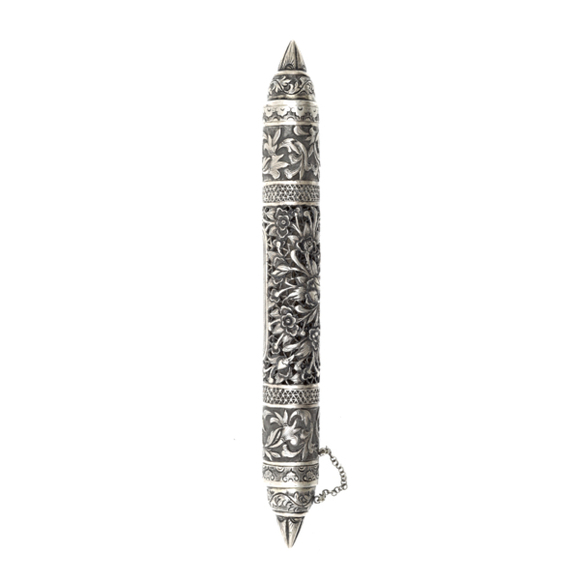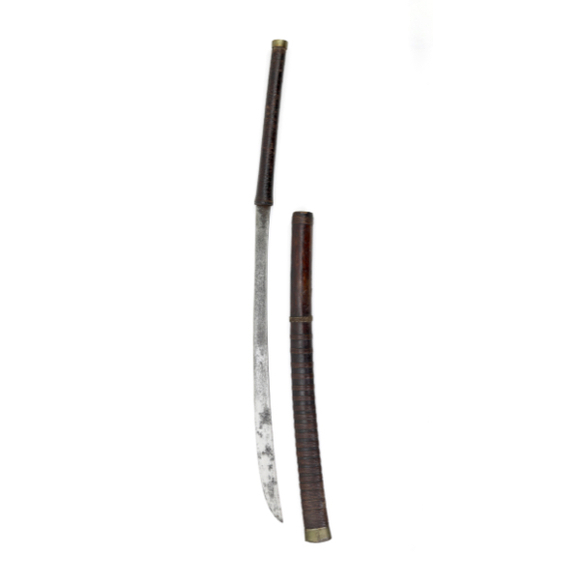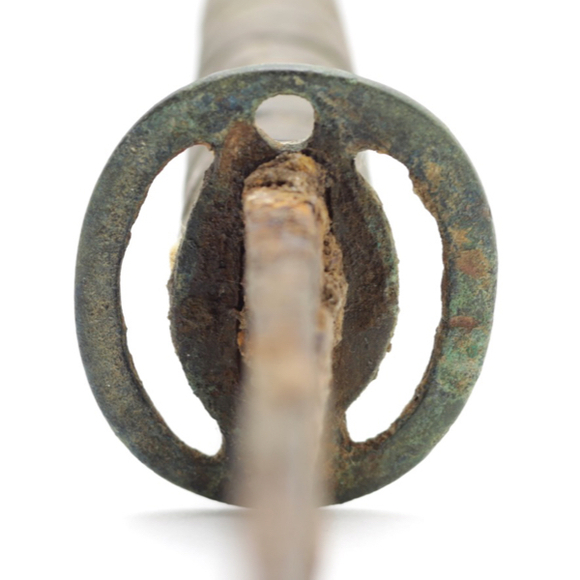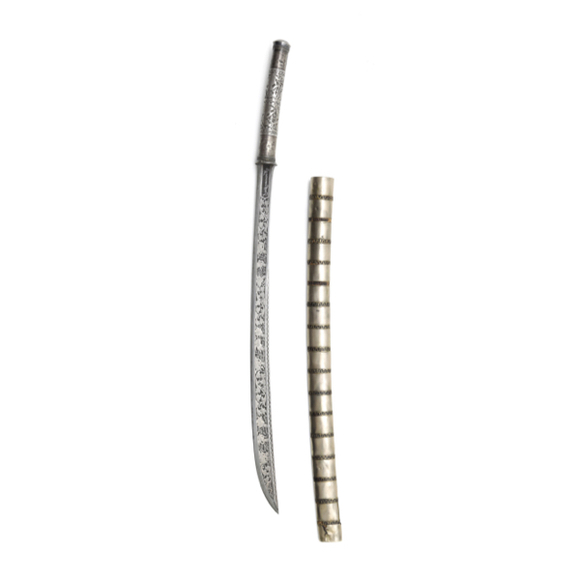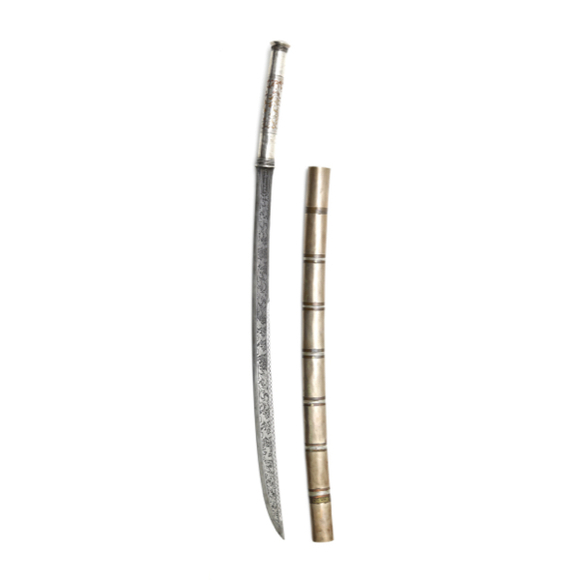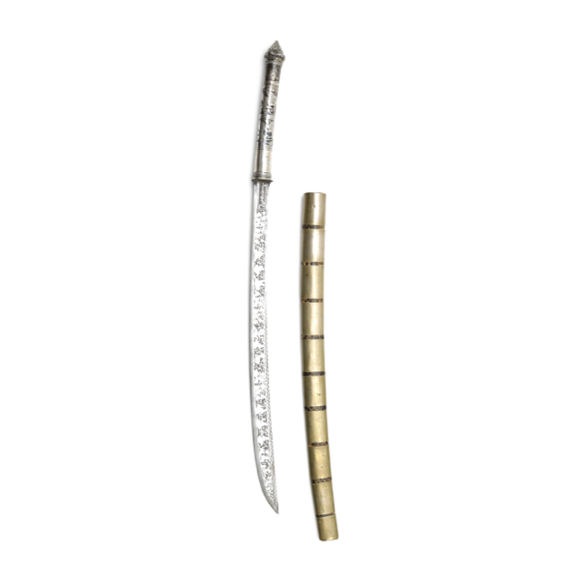Language: Burmese
Source: Period accounts and dictionaries
Description
Shan da (ရှမ်းဓား) literally means "sword of the Shan". The Shan are a group of minority people of southeast Asia that are inhabiting parts of mainly Burma, Yunnan (China), and Thailand. They are the largest minority group in Burma. They were known as good craftspeople, primarily their silverwork.
Their native swords are a variation of the da. Several types were in use. In comparison to the Burmese da, Shan da are usually a little lighter in the hand.
The more ornate Shan da are instantly recognizable by their silver-clad hilts and scabbards. The hilts often have a grip section consisting of a mesh of silver wire, while the scabbards are often entirely clad in silver with decoration consisting of fine silver wire that is soldered on.

A typical example of a Shan da.
Sold by Mandarin Mansion in 2019.

A so-called Kachin style da named so after the squared tip favoured in the Kachin states.
However, the style and craftsmanship, and even its balance, betray it is pure Shan work.
Sold by Mandarin Mansion in 2019.

A da of the "Chinese Shan". The main identifying feature is the large pommel.
Otherwise the silverwork resembles that of other Shan people.
Mandarin Mansion stock 2020.
In historical sources
One dictionary describes the Shan da as a light sword with pointed blade.1
The Yun, or Zimme, Shans are by no means a quarrelsome race, but are subject to sudden outbursts of passion, if they think they are ill-used; and can give an excellent account of their enemies. They are more hardy than either the Siamese or Burmese, and are more manly in their bearing.
In addition to a sturdy staff, not unlike the lattee of India, they habitually carry a dha, or short heavy sabre, and know how to use it, either in cutting their way through the jungle, or in self-defence. When in dangerous districts, or anywhere where danger from man or beast may be expected, they carry, in addition to these, a flint-lock musket or a spear.
They are considered to be adepts at lying in ambushcades and at night-attacks - are quick of sight and hearing, and creep through the forest in a surprisingly quiet way; their constant life in the woods gives them this advantage. McLeod says that all Shan attacks on their neighbours' villages have been made at night. They never wait to make a regular attack, or fight by day; if they fail in their attempt, they retreat, and watch for a more favourable opportunity.2
-Archibald Ross Colquhoun, 1894.

Illustration from Amongst the Shans.
Notes
1. Myanmar-English Dictionary by the Myanmar Language Commission. 1993. A useful online source is the SEAlang Library Burmese Dictionary Resources. All transcriptions are thus in the MLC Transcription System.
2. Archibald Ross Colquhoun; Amongst the Shans. New York, Scribner and Welford. 1894. Page 271.

